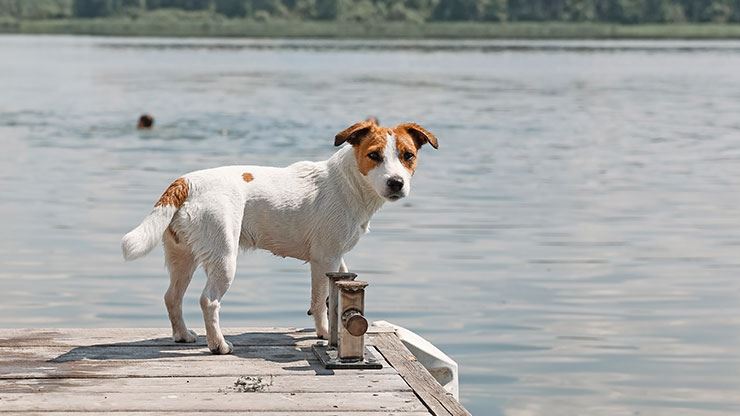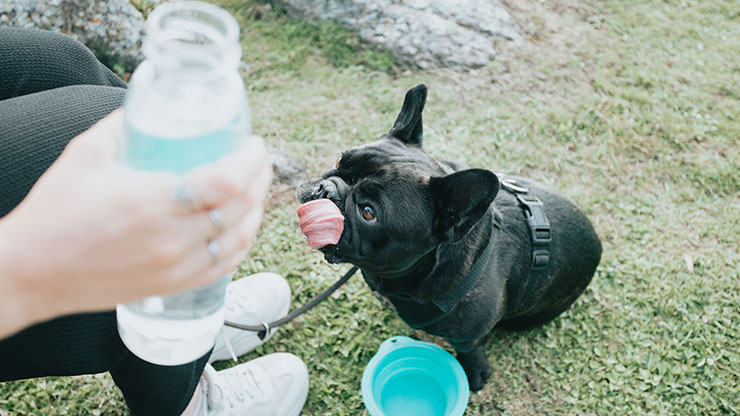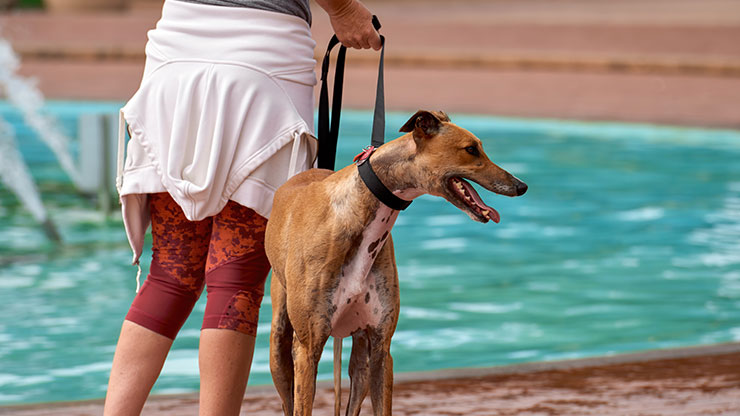
Pet Safety Around Water
You might think that swimming comes naturally to all dogs … and for many, it does. There are pups who were born to paddle and love nothing more than to splash around in a pool or go dock diving. However, there are other dogs who will avoid getting their paws wet at all costs. Whichever type of canine you have — a sea dog or a land-pupper — it's important to keep them safe when they're around bodies of water.
General Tips
- Stay Vigilant and Be Proactive
When it comes to water, canines — just like children — have a knack for getting themselves into dangerous situations. For example, even expert swimmer dogs could get swept out to sea by a riptide or pulled under by a strong undertow in a river. A non-water-loving pup could accidentally fall into a pool. So, it's always in your dog's best interest to keep a watchful eye on them whenever they're near pools, rivers, lakes, or the ocean. Another good idea? Outfitting your dog with a life vest gives them buoyancy in case something goes wrong while they're in or near the water. - Introduce Your Dog to Water Slowly
It only takes one bad incident to permanently ruin your dog's attitude toward water. So, be very patient while getting your pup used to splashing around or teaching them to swim. You don't want to rush things, which could inadvertently create a fear of water in your canine. - Know Your Breeds
Not all dogs are built to swim. For instance, dogs with flat faces (brachycephalic breeds) — such as Pugs and French Bulldogs — often have difficulty keeping their noses out of the water. Canines with short legs and long bodies, such as Basset Hounds, may also have a difficult time swimming. On the other hand, some breeds are known for being excellent swimmers. These include Portuguese Water Dogs, Newfoundlands, and Labrador Retrievers. - Provide Drinking Water
Your dog is likely to work up a thirst while splashing around and swimming. So, it's likely they'll be tempted to drink the surrounding water. While ingesting small amounts of ocean, lake, river, or pool water has a low chance of harming a dog, it is best to err on the side of caution. Some freshwater bodies can be contaminated with leptospirosis, one of the diseases dogs have to be vaccinated against. And in large quantities, this water could make your canine ill or could even be deadly.
Pool water, for example, contains chemicals such as chlorine that could cause your dog to vomit. Ocean water is very salty, and drinking a large quantity of ocean water could dehydrate a dog. Lakes and rivers can sometimes contain algae and bacteria that could sicken or even kill a canine if ingested. That's why it's so important to have clean water available for your dog to drink as an alternative. - Wash Your Dog
Always rinse your dog after they've played in a body of water to remove any chemicals, bacteria, or algae from their coats. Failing to do so could cause your dog's skin to become irritated. Even worse? A dog licking their coat after a swim in a contaminated lake or stream could ingest potentially deadly blue-green algae.
-----

-----
Pool Safety Tips for Dogs
- Fence In Your Pool
Install a fence around your pool to prevent your dog from accidentally falling into your pool or from going on unsupervised swims. Make sure that it's tall enough to prevent a determined pup from jumping over it to reach the water. - Invest In a Pool Alarm
These devices will alert you if they detect unexpected movement in the water. A pool alarm can be a secondary line of defense if someone accidentally leaves the gate to your fence open. - Teach Your Dog How To Get Out of Your Pool
If your swimming pool has steps, teach your dog how to reach them from different points in your pool. Don't assume they'll remember how to get out on their own. Dogs may panic if they accidentally fall into a pool and could desperately try to climb out instead of heading toward the steps. So, it's imperative that you train your pup to know where the exit points are no matter where they are in your pool. - Add Dog Ramps or Steps
If your pool doesn't have an easy way for your dog to exit, add ramps and steps that have been designed specifically for pets. Even if you already have exit steps for your pup, adding an extra ramp in another area of the pool may be a good idea for your pet's use.
-----

Stay Safe All Season Long
By following these tips and staying alert to any dangers, you and your canine should be able to spend many hours swimming and playing together in the water.
-----
AUTHOR BIO
Hillary Rymer is VP of Marketing at Pool Troopers. Raised in Florida, Rymer grew up around swimming pools and even swam for the University of Alabama. She is passionate about pool safety and providing backyard freedom to all pool owners.
Additional Sources:
https://www.akc.org/expert-advice/health/dogs-drinking-pool-water-dangers-chlorine/
https://moderndogmagazine.com/articles/can-all-dogs-swim/129007
https://caninecountry.org/dogs-that-dont-and-do-love-to-swim/
https://allsafepool.com/pool-drain-safety-101/
https://www.nsf.org/blog/consumer/hidden-dangers-pool-drains
https://www.coastalpet.com/blog/8-water-safety-tips-for-dogs/










